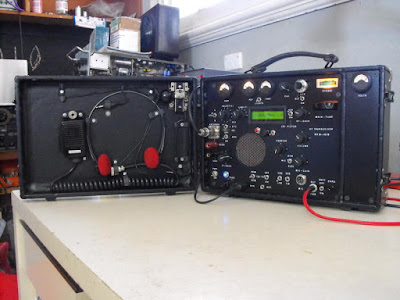Hey Bill and Pete
Man, I am loving the podcast!
It is absolutely what I need, and what ham radio needs today!!!
I am at about episode 168 trying to catch up.
I would really like to build a Mighty Mite.
In fact, going on the record,
I AM GOING TO BUILD THE MICHIGAN MIGHTY MITE.
If you have any crystals left could you please send me one.
I've got a 9 year old boy that's home schooled and I want to make this electronics hobby a stepping stone to a higher learning experience.
I got in to ham radio to learn electronics and somewhere along the line I just learned how to send and receive CW and how to pass multiple choice question tests. Somehow along the way I lost my love of radio. I still have a nice modern day rig, but it has no "soul". I heard that comment in one of your episodes and it really rang a bell with me and when it rang I said,
"Oooh, that's Awesome! "
I want a radio experience with soul!
I think that maybe why folks still use CW. It's a mode with soul. I know you champion SSB, but home brewing a CW transmitter and receiver has got to be a truly soulful experience. And its one I intend to have as one of my own.
I too want to enjoy the "Joy of Oscillation ".
With you guys inspiring me, I am sure this will be a wonderful adventure.
THANK YOU! THANK YOU! THANK YOU!
For your guidance and inspiring work in the field of homebrew radio.
Sincerely,
Paul Hodges
KA5WPL
P.S.
The chemistry of you 2 guys on the show REALLY remind me of Click and Clack. You guys really work well together!
PLEASE DON'T STOP!
73
---------------------
Paul: Consider yourself inducted. There are, however, some conditions:
1) You MUST build the MMM and make it oscillate (thus experiencing the JoO).
2) You MUST send a picture or (better) a video of your MMM in operation.
3) You have to give me permission to put your e-mail (below) on the SS blog.
4) You have to send me your address so I can issue you a for-real SS 3.579 crystal (with mojo).
Deal? 73 Bill
-----------------
Deal,
I'll do my best to get video, at the very least I'll get pics.
As for making it actually oscillate, well if the "radio gods" let it be then I'll be having some good vibrations going on in the shack. Hope to have it going before first snow...of 2015...
Also, being inspired as I am, I made a CW contact with 5 watts since I emailed you last.
Thanks for helping me get the fun and excitement and the adventure back in to ham radio!
Sincerely,
Ka5wpl
P.S.
Please send a card if you have one with the crystal.
PPS Also why not initial it if you've got a small enough pen :)
73
----------
Our book: "SolderSmoke -- Global Adventures in Wireless Electronics"
http://soldersmoke.com/book.htm
Our coffee mugs, T-Shirts, bumper stickers:
http://www.cafepress.com/SolderSmoke
Our Book Store:
http://astore.amazon.com/contracross-20







































